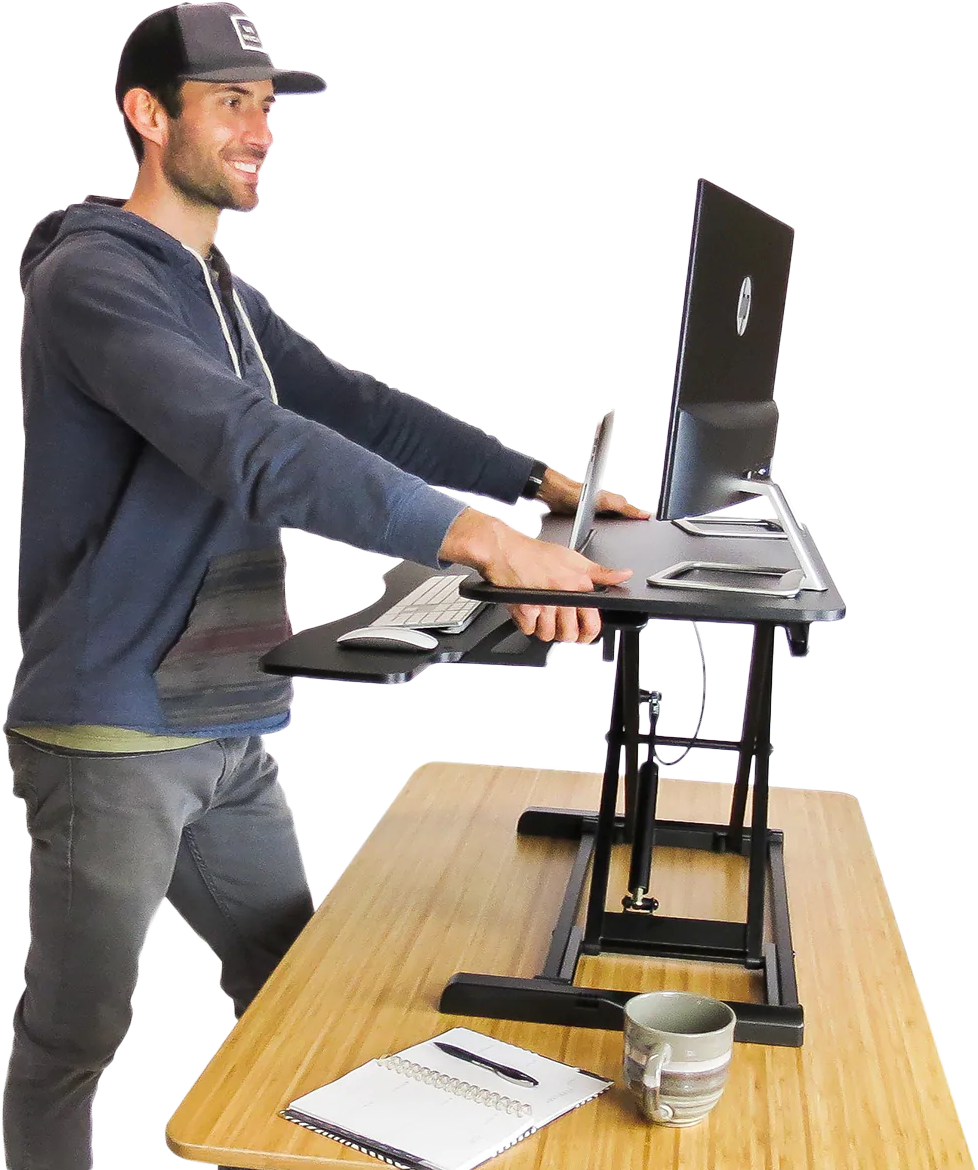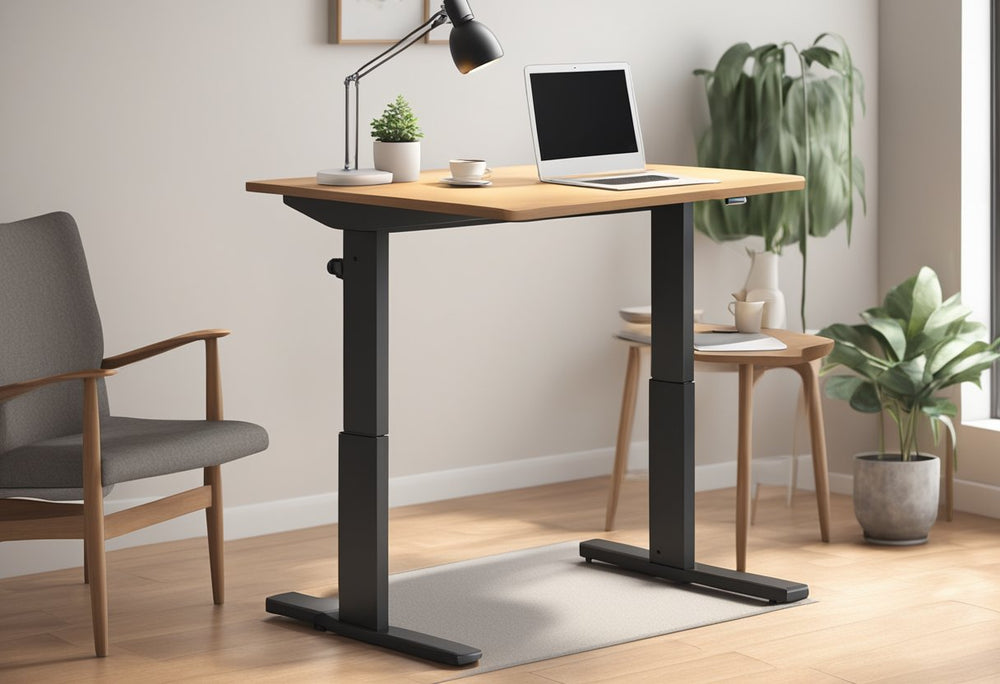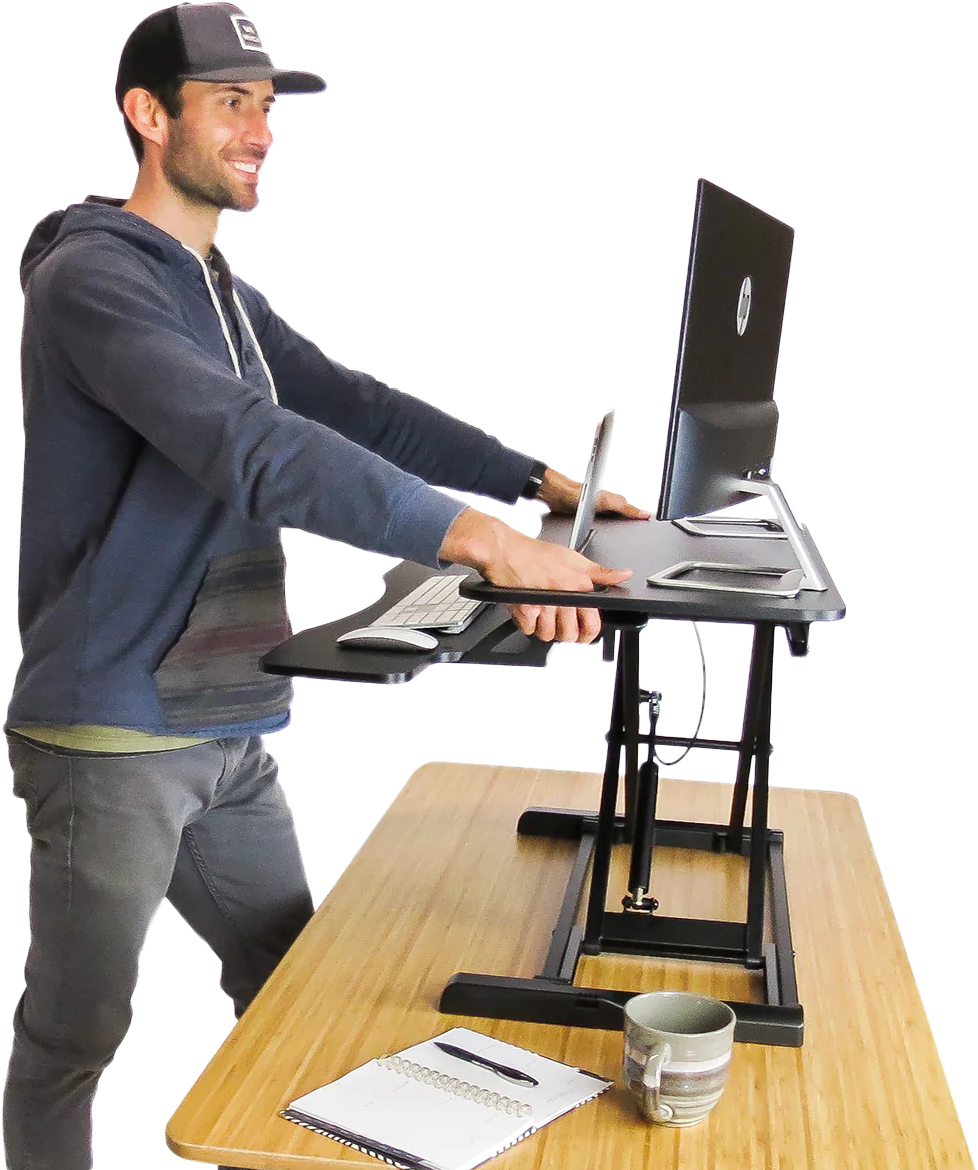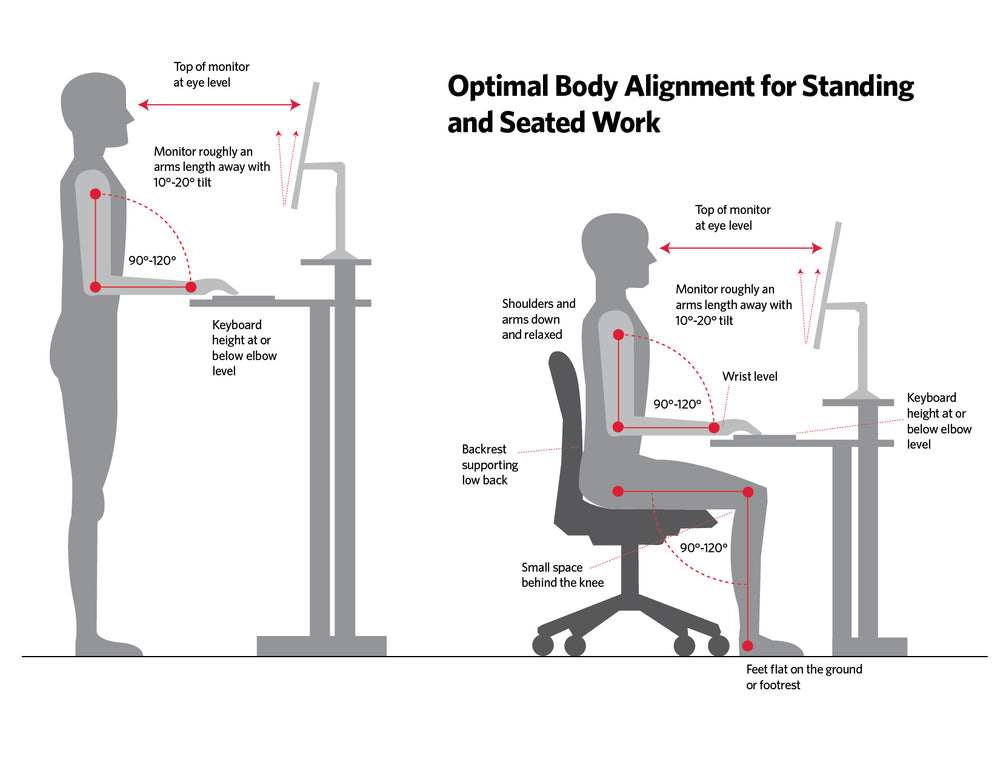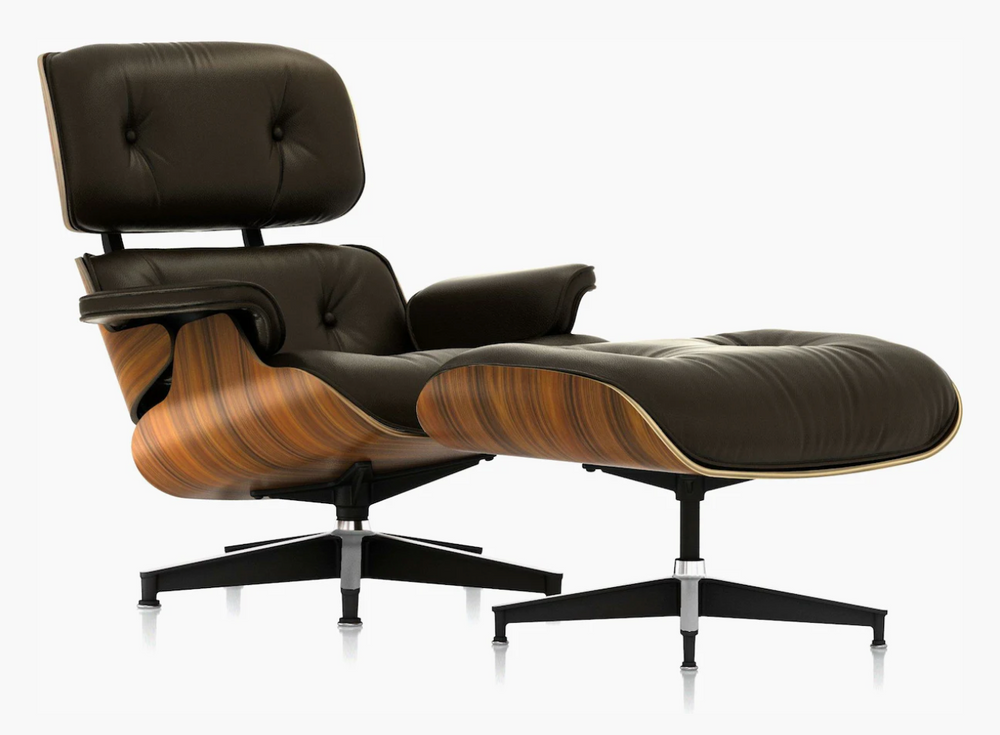By: Mike Lipka | Date: November 5, 2023
We have gotten a lot of people finding DeskRiser.com by searching "desk riser for standing", so we figured we would dedicate a page to this topic.
A desk riser for standing, usually referred to as a standing desk converter or stand-up desk riser, is a device that's placed on top of your existing sitting desk to turn it into a sit to stand desk with an elevated work surface.

The primary function of a standing desk riser is to allow the user to alternate between sitting and standing while working, without the need to replace their existing desk.
Let's discuss what a desk riser is, how it differs from a full standing desk, and how it might have a positive impact on your health.
Table of Contents: What is a Desk Riser for Standing?
1. Adjustability
-
Manual: Most desk risers are adjustable, allowing the user to raise or lower the work surface to a comfortable height for standing or sitting. They adjust either manually or electronically. The manual desk risers are usually achieved through pneumatic lifts, spring-loaded mechanisms, or manual adjustments.
Below is a picture of a woman using our Desk Riser Classic, which adjusts up and down with the use of handles that are squeezed.

While the pneumatic lifts make for easy adjustment, some people prefer manual over electric desk risers because it engages their arms throughout the day when they want to adjust from sitting to standing and vice versa.
-
Electric: Electric desk risers use a simple touch pad to lift and lower the work surface. For anyone that wants to keep their existing desk but turn it into a desk riser for standing and that also suffers from back pain of any kind, this is a preferred option.
A very popular electric desk riser is the Electric Standing Desk 3.0, which includes 4 convenient AC outlets on the top work surface as well as 2 x USB 2.0 ports to charge your mobile devices.

2. Work Surface
-
Wide Work Surface vs Narrow Work Surface: The top level of a desk riser typically is called the work surface and is the level that your monitor(s) sit on. This level can be narrow, like the Arca 28 desk riser which is just 28 inches wide and supports a single monitor.

Or it can be extra wide like the Desk Riser Extra Grande, which is a 46 inch wide desk converter that can support 3 monitors and is compatible with monitor mounts.
- Sliding keyboard tray vs fixed keyboard tray: A feature that a lot of users love is a sliding or retractable keyboard tray. Why? Because it allows you to stand far enough away from your monitor screen to avoid eye strain. The following desk risers feature a sliding keyboard tray:

3. Affordability
- Full standing desk vs desk riser: A desk riser is typically far less expensive than purchasing a complete standing desk. The reasons for the affordability difference are:
- Material and construction costs: Standing desks often require more materials due to their size and the mechanisms needed for height adjustment. In contrast, desk risers are generally smaller and sit atop existing desks, so they require fewer materials.
- Complexity: Full standing desks, especially those with electronic height adjustment features, have more intricate components, like motors and electronic controls. These components are often costlier than the simpler mechanisms found in most desk risers.
- Shipping and Handling: Due to their size and weight, standing desks can be more expensive to ship than desk risers. The bulkier size might also result in higher storage costs for retailers.
- Entry to standing at your desk: Some standing desk converters or desk risers are positioned as entry-level solutions for people who want to try standing while working without committing to a full desk. Thus, pricing them lower can make them more accessible and appealing to a broader range of consumers.
- Less Structural Rigidity Needed: A full standing desk needs to be structurally sound to support all the weight on its own. In contrast, a desk riser relies partly on the existing desk's sturdiness, so it might not need to be as robustly built.
- Installation and Assembly: Standing desks often come with more parts and might be more complicated to assemble, which can add to the cost. Desk risers usually have simpler assembly processes, and some of them ship fully assembled, like the following:
4. Space Saver
-
Since a desk riser sits on top of an existing desk, it doesn't require as much space as a full-sized standing desk, making it a good option for those with limited workspace or those who don't want to invest in a new desk.
What's more, some desk risers at their lowest heights are low enough to make them mobile and can be stowed away in a closet or under your desk when they are not being used. A good example of a smaller standing desk converter is the Desk Riser 28X or the Arca 28.
5. Health Benefits
- We have written extensively about how standing desks may help people with back pain, how standing desks may help people with neck pain, and about the overall health benefits of a standing desk.
To summarize, regularly switching between sitting and standing can alleviate some of the health concerns associated with prolonged sitting, including back and neck pain, and can also promote more movement throughout your day, which has profound health benefits.
Here are some important studies on sedentary lifestyles associated with sitting that are very relevant to your decision on switching to a standing desk riser: - A study in the European Heart Journal in 2015 indicated that prolonged sedentary behavior, such as sitting for extended periods, is associated with increased risks of various diseases, including heart disease.
- A 2018 meta-analysis in BMJ found that longer durations of sitting time is associated with a higher risk of all-cause mortality.
- Standing after meals appears to reduce blood sugar levels to a smaller extent, which could be extremely beneficial for people with insulin resistance or type 2 diabetes. A 2016 study in the European Journal of Preventive Cardiology showed that standing for six hours a day could prevent weight gain and assist with weight loss.
Conclusion: What is a Desk Riser for Standing
If you're considering a standing desk solution, a desk riser can be a practical and cost-effective way to introduce standing into your work routine without a complete office overhaul.
However, it's essential to ensure that the desk riser you choose can support the weight and size of your equipment and can be adjusted to a height that's comfortable for you. If you're tall, you will want a standing desk for tall people. If you use multiple monitors, you will want a large standing desk riser.
I'll leave you with this great video from the Mayo Clinic: Tips for Transitioning to a Standing Desk


